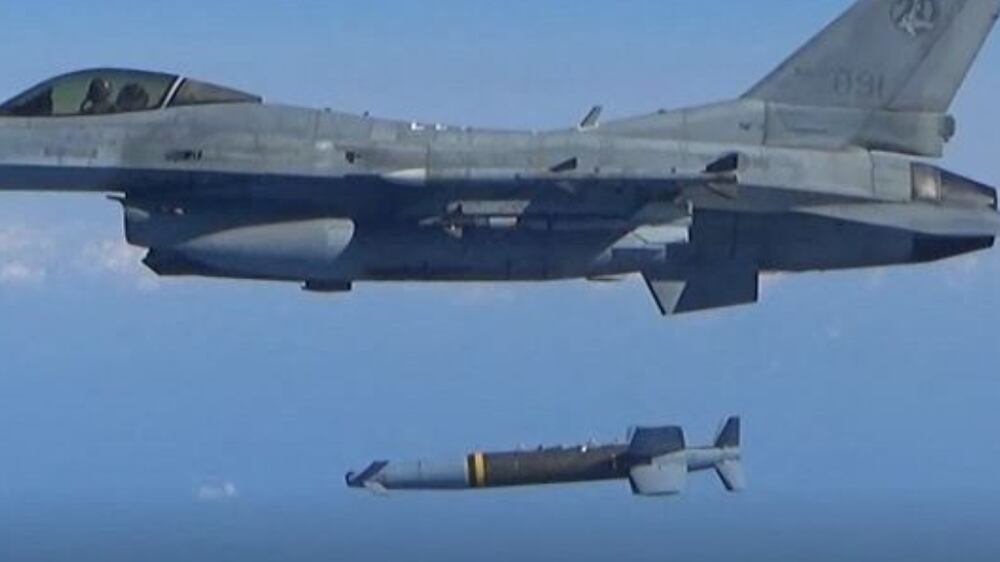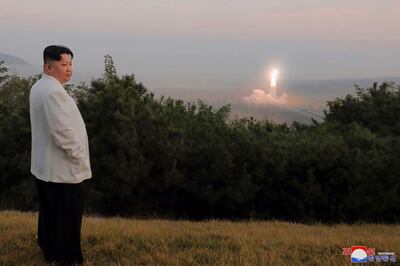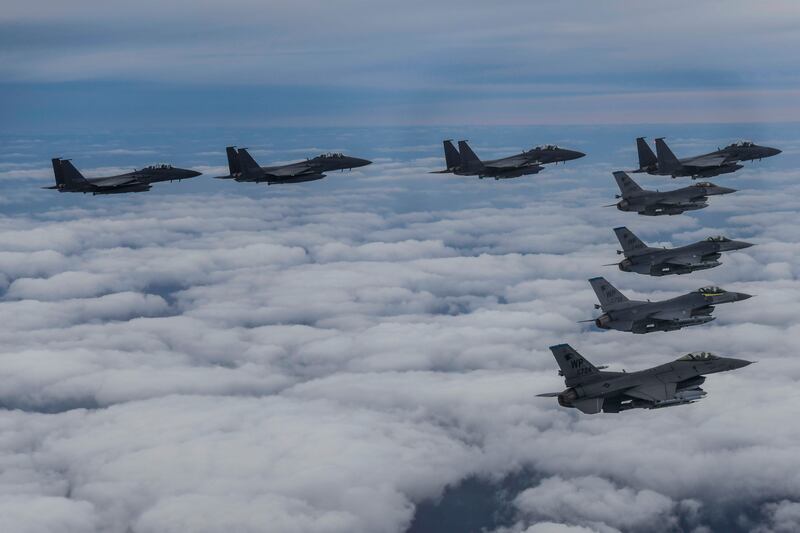South Korea scrambled about 80 fighter jets including advanced F-35 stealth planes on Friday after tracking about 180 flights by North Korean warplanes in what appeared to be a show of strength.
North Korea’s fighter jet manoeuvres came after the test-firing of about 30 ballistic missiles over the past two days — including an intercontinental ballistic missile (ICBM) on Thursday that triggered evacuation warnings in Japan — in response to ongoing joint exercises by hundreds of US and South Korean military planes.
Foreign ministers from the Group of Seven issued a statement saying North Korea’s nuclear tests or other “reckless action” must be met with a swift, united and robust international response.
North and South Korea fire missiles near waters of each other's coasts

South Korea’s Joint Chiefs of Staff said on Friday that the North Korean warplanes were detected in various areas inland and along the country’s eastern and western coasts, but did not come particularly close to the countries’ border.
The South Korean military spotted about 180 flight trails between 1pm and 5pm, but it was not immediately clear how many North Korean planes were involved and whether any had flown more than once.
None of the planes breached the South Korean military’s virtual “tactical action” line, which is 20 to 50 kilometres north of the Demilitarised Zone and the maritime Northern Limit Line. It is used for monitoring purposes to give the South enough time to respond to provocations or attacks.
South Korea still scrambled about 80 of its own warplanes, including an unspecified number of F-35 fighters. There were not any immediate reports of clashes.
The F-35 is the most expensive weapon ever made, with an estimated $1.5 trillion in development costs over its lifetime and shipping amounting to at least $100m per plane.
US and South Korean forces have been conducting joint “Vigilant Storm” aerial exercises involving about 240 warplanes, including F-35s.
The exercises had been scheduled to end on Friday, but the allies extended them to Saturday in response to North Korea’s intensified testing activity this week.
The extension of the drills was announced on Thursday after North Korea test-fired an ICBM, which triggered evacuation alerts and temporarily halted trains in northern Japan. It followed the launch by firing two short-range ballistic missiles into the sea.
Pak Jong-chon, a senior North Korean military official, then issued a statement threatening retaliation over the drills’ extension.

North Korea subsequently fired three additional missiles into the sea and shot about 80 artillery rounds into the eastern parts of the maritime buffer zones created by Seoul and Pyongyang in 2018 as part of agreements to reduce tension.
On Wednesday, North Korea fired more than 20 missiles, the most it has launched in a single day.
Those launches came after Mr Pak issued a veiled threat of a nuclear conflict with the US and South Korea over the joint drills, which the North says are rehearsals for a potential invasion.
After already setting an annual record with dozens of ballistic missile launches in 2022, North Korea has dialled up its testing activity since late September, including what it described as simulated nuclear attacks on South Korean and US targets.
It has said its tests are meant as a warning against US military drills with South Korea and Japan.
Experts say North Korea is attempting to force the US to accept it as a nuclear power and seeks to negotiate economic and security concessions from a position of strength.






